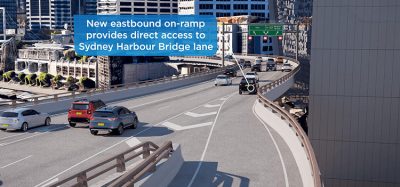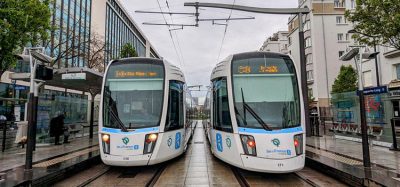Controlling access to metros
- Like
- Digg
- Del
- Tumblr
- VKontakte
- Buffer
- Love This
- Odnoklassniki
- Meneame
- Blogger
- Amazon
- Yahoo Mail
- Gmail
- AOL
- Newsvine
- HackerNews
- Evernote
- MySpace
- Mail.ru
- Viadeo
- Line
- Comments
- Yummly
- SMS
- Viber
- Telegram
- Subscribe
- Skype
- Facebook Messenger
- Kakao
- LiveJournal
- Yammer
- Edgar
- Fintel
- Mix
- Instapaper
- Copy Link
Posted: 31 March 2006 | James Abbott, Technical Editor | No comments yet
Public transport authorities responsible for metros and other rail and bus systems are increasingly using access control systems to regulate access to their premises.
Recent security alerts on European metros have served to emphasise the benefits of systems that regulate access to stations and trains. Increased security awareness provides a potent reason for installing ticket gates, turnstiles and other barriers controlling access to stations, and platform screen doors that prevent access to tracks.
Public transport authorities responsible for metros and other rail and bus systems are increasingly using access control systems to regulate access to their premises. Recent security alerts on European metros have served to emphasise the benefits of systems that regulate access to stations and trains. Increased security awareness provides a potent reason for installing ticket gates, turnstiles and other barriers controlling access to stations, and platform screen doors that prevent access to tracks.
Public transport authorities responsible for metros and other rail and bus systems are increasingly using access control systems to regulate access to their premises.
Recent security alerts on European metros have served to emphasise the benefits of systems that regulate access to stations and trains. Increased security awareness provides a potent reason for installing ticket gates, turnstiles and other barriers controlling access to stations, and platform screen doors that prevent access to tracks.
Such barriers have been increasing in popularity for other reasons. The primary reason for installing ticket gates is of course revenue control, with gates preventing those who do not hold valid tickets from gaining access to the system. New-build metros are generally fitted with ticket gates, but they are increasingly being fitted to historic systems as well. For example, the London Underground (LU) system has been fitted throughout with gates from the British arm of the US Cubic Corporation, a partner in the TranSys consortium that supplies the Oyster smartcards in use on LU. The gates recognise not only Oyster contact-less cards but also traditional magnetic strip tickets that pass through the readers on the ticket gates.
The benefits of ticket gates are increasingly being recognised on mainline railways as well as metros. When trials were held with ticket gates at Balham station in south London a few years ago, revenue leapt up – levels of fare evasion had been very high. This convinced the privatised British train operators that ticket gates were worth installing, and now most suburban systems in the UK have gates. Cubic has taken the lion’s share of the market, with a recent contract for Merseyrail exemplifying the trend.
Liverpool-based Merseyrail, run by a joint venture of Serco of the UK and NedRail of the Netherlands, operates one of the busiest urban rail networks in Britain outside London, with over 27 million passengers annually. The £2m contract with Cubic covered installation of gates at the busiest of the 66 stations on the Merseyrail network. The gates support magnetic strip farecards and include Cubic’s patented Tri-Reader, which can process any type of smartcard that meets international standards. This has proved to be useful forward planning, as after the contract was placed with Cubic for the gates, Fujitsu was appointed to supply a new smart-enabled ticket for existing concessionary travel pass-holders when their current pass expires. The chip inlay with the Fujitsu tickets will have a shell and product set conforming to the ITSO standard smartcard specification.
Are gates economic?
Cubic has supplied more than 1,000 gates to the UK train operating companies and the British market is now approaching saturation. Although not all stations have been equipped, the ‘low-hanging fruit’ has been picked.
Deciding whether or not fitting gates will show an economic return is a complex business. Fitting gates at a London terminal that most passengers pass through will usually be cost-effective as it will often catch one end of a journey, meaning it does not matter so much if the ticket goes unchecked at the other end. By contrast, fitting gates at a quiet country station may not be worthwhile. For example, installing gates at busy London Bridge station was a complicated job and cost around £1million, but the passenger throughput is large. A smaller station might cost say £250,000 to equip, but this might not prove economic.
It was discovered early on in the British gating revolution that labour savings would not be as great as was once hoped. It is still necessary to have staff on gate lines to deal with faulty tickets, sell tickets to those who have travelled without them and answer questions from passengers. In these circumstances, at quieter stations the person on the barrier may as well check the tickets as well.
A host of factors such as this influence the question of whether or not it is worthwhile to install ticket gates on existing systems. Historic buildings with narrow passageways may require expensive building work to fit gates in, and then there may be issues about routing power and data cables to the gates. If the passenger throughput is small, it may prove too expensive.
One factor in the structure of the British railway industry is the length of franchises. Operating franchises are let for a number of years and at their expiry they come up for refranchising. An operator will not want to finance installation of ticket gates if the company cannot get its money back on the investment before the expiry of the franchise, in case it does not win the franchise a second time. To overcome this problem, the Porterbrook subsidiary of the Abbey National bank, whose primary business is leasing of rolling stock, has also entered into lease deals on ticket gates. If a new operator comes in, it takes over payments on the leases on the gates from the old operator.
Keeping undesirables off the system
It is difficult to quantify the benefits of gates in excluding undesirable people from the network, but the benefit is definitely there. For instance, South West Trains in the UK found an immediate improvement at Wimbledon station in south London once it was fitted with gates. Miscreants who might have entered the station, boarded trains without tickets and indulged in anti-social behaviour such as writing graffiti, were discouraged from entering the station by gates, making the environment more pleasant for law-abiding passengers. People who travel without tickets are more likely than fare-paying passengers to commit other crimes, so keeping them off the system has a double benefit.
As another example, South Eastern Trains (SET) is fitting gates this year to Ramsgate, Hastings and Dover Priory stations. “Preventing undesirables from entering the network at the outset is …fundamental” says Alex Warner, SET’s Retail Director.
Gates in France
On the European mainland, while ticket gates are often found on metro systems, they are not so common on main line railway stations. In France, for instance the ‘composter’ system with on-train ticket checks is used, but this does not prevent people without tickets from gaining access to the platforms. In Paris, this has now been remedied: at stations in the Ile de France, SNCF (French Railways) has installed 1,250 automatic gates and 250 interlocks from Automatic Systems of Wavre.
This Belgian company is now involved in a project for SYRTAL, the public transport operator for the Rhône and Lyon area. The multi-million Euro contract, which Automatic Systems says is the biggest it has yet won, involves the installation of access control equipment in the Lyon metro. The order covers 641 TGH 800 automatic gates, 62 TGL 870 Interlocks, and 15 TGE 860 only-exit doors. The installation of this equipment will be completed by the end of 2006.
Control for the Olympics
Asia, with its fast-growing urban centres, is a buoyant market for all the access control equipment suppliers. China is spending heavily on building new metros in an effort to keep up with spiralling demand, nowhere more so than in the capital, Beijing, where a big effort is being made to put on a good show to the world during the 2008 Olympics. Japan’s Omron and Gunnebo Entrance Control of Sweden have signed a contract for the joint delivery of barriers to 16 stations on Beijing metro’s Line 5. The deliveries began in December 2005.
“Our new generation of flap type mechanisms combine improved performance with compactness, which allows it to be integrated in a smaller cabinet with considerable saving of space. The flaps are manufactured out of an elastic material with a telescopic function, which allows safe and effective passage” explains Leo Detassis, General Manager of Gunnebo Entrance Control’s Metro Division.
In Italy, the recently constructed Turin metro was an important element in the city being chosen to host the 2006 Winter Olympics. The new metro helped the city cope with the influx of visitors and has provided residents with a viable long-term public transport alternative to driving into the city.
The Turin metro consists of a 13 kilometre line linking the northwest commuter belt of Collegno with Porta Nuova, a central station in the heart of the city.
Thales was the contractor chosen to deliver the access control, ticketing and intrusion detection systems for 15 new unmanned stations built along Line 1.
In total 183 access control gates, magnetic ticket handling units and contact-less card and ticket handling units, as well as 36 automatic ticket vending machines were supplied. The system is operated by a central server based in Collegno.
According to Thales, the system is one of the first in Europe in which public transport ticketing has been integrated with car park ticketing, allowing customers to use one ticket for both travelling and parking.
Thales received an order from Gruppo Torinese Trasporti (GTT) to equip one of the operator’s 20 car parks with a ticketing system that is fully integrated with the transport network. Passengers leaving their vehicles at this car park can now purchase a magnetic ticket at the car park that will cover both the parking and the use of the metro. After delivery of the first car park system, Thales is now implementing the same system in other car parks and expanding it to include contact-less tickets.
As well as the technical considerations, Thales had to take into account specific requirements linked to the Paralympics, which were to take place after the Olympics. Having worked with the Italian association for disabled people to access the needs of this group when travelling by metro, Thales designed the first ever access gate to accommodate disabled people, especially those who are blind or partially sighted. Design features implemented included wider gates, a buzzer to warn the passenger and a monitoring device on the floor that reacts to the approaching person, essential in unmanned stations.
Bus stations
Buses are generally thought of as not suitable for off-vehicle access control, and for a bus stop at the side of the street that is the case. But in big bus stations the same argument about keeping out undesirables applies as much as it does in railway stations. Gunnebo has recently won contracts with two Columbian companies, Recisa and SAR/Angelcom, for the supply of access control equipment in bus terminals in Pereira and Bogotá. The Pereira order is for 350 turnstiles to be delivered for installation in entrances and exits where passengers alight, while in Bogotá, Gunnebo is supplying 80 turnstiles to complement 500 Hercules mechanisms it had already installed.
Half the turnstiles are fitted with drop arms for rapid evacuation in the event of a power cut or other kind of emergency situation.
Platform screen doors
While ticket gates and turnstiles prevent undesirables from gaining access to stations, platform screen doors are another line of defence as they prevent people from going on to the track. Not only criminals are prevented from getting on to the track. Last year in Hong Kong there was a case of a child walking down the metro track. What had happened was that a family from mainland China had been separated in the crush when a metro train came in. In the People’s Republic, railway lines are commonly used as pedestrian routes, so the lone child had sought to rejoin his parents by following the train they were on – simply by walking after it down the track. Luckily, all this was seen on video cameras and no harm came to the child, who was tearfully reunited with his parents, but there was some disruption to service from the incident.
Most stations on the Hong Kong mass transit system are fitted with platform screen doors. In January 2000 the Swiss company Kaba Gilgen AG received a major order from MTR Corporation Hong Kong, to retrofit 30 underground stations with platform screen doors on the Kwung Tong, Tsuen Wan and Island Lines. By 2006 a total of 2,960 automatic doors had been installed on 74 platforms. The incident with the child walking on the track took place at one of the few stations that are not fitted, giving the MTR Corporation an extra incentive to complete installation of screen doors throughout the system.
Kaba Gilgen has been producing a wide range of automatic doors and gate systems for over 40 years. In the 1990s Kaba Gilgen expanded its business to automatic doors for public transport, and it has supplied platform screen door systems (full- and half height) to cities including New York (US), Toulouse (France), Kaohsiung (Taiwan) und Taipei (Taiwan).
Preventing children from wandering onto the track, although a valuable side benefit, is not the chief reason for installing doors on the edges of platforms. “Safety is the number one reason” says Nick Brailey of Knorr Bremse, one of the chief platform screen door suppliers. “Some metros, particularly in East Asia, are massively crowded: maintaining safe conditions is difficult if there is a possibility of getting pushed off the platform.” Another factor is that the doors help direct crowds into waiting in the correct spot for joining the train, as people know just where a door on the train will be from the position of the platform door.
Knorr-Bremse supplied the first platform screen doors on the London Underground system, on the underground stations of the Jubilee Line Extension in the 1990s, and has made doors for metro systems around the world, from Denmark and France to China and Singapore.
Another plus point of platform screen doors is climate control. On lines which are not air conditioned, such as the Jubilee Line in London, a gap is left above the doors for the circulation of air in the station, which is facilitated by the piston effect of the trains through the tunnels. But new metro systems in the humid climates of East Asia often have air conditioned stations and trains, and in this case platform screen doors are an integral part of the climate control system, helping to keep platforms cool.
Faiveley is a platform screen door manufacturer which has supplied systems in humid cities such as Hong Kong, Taipei and Kuala Lumpur, as well as cities in Europe and North America such as Paris and Chicago. The company says that the energy savings made possible by platform screen doors can be key to their economic justification: “the savings obtained can match the costs of the doors themselves.” Faiveley sells train door mechanisms as well as platform screen doors and the company maintains that getting the two synchronised so as to minimise open time is the key to energy efficiency.
While platform screen doors have traditionally been used at indoor, underground stations, their use is extending onto open air stations, where they can protect passengers from the worst of the weather – rain, sleet and so on. And they ensure that any children that lose their parents stay in a safe place until the authorities are able to reunite the family!
Related topics
Security & Crime, Vehicle & Passenger Safety
Issue
Issue 1 2006
Related people
James Abbott








